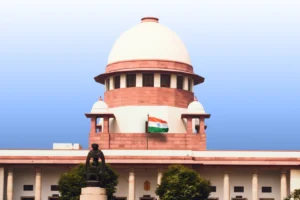
In recent days, the northern regions of the country are witnessing a deluge-like situation. From Himachal Pradesh to Uttarakhand, Uttar Pradesh, and Rajasthan, heavy rainfall has resulted in water everywhere. Even the capital city of Delhi, which is a part of India’s major territory and home to the world’s smartest and modern cities, has not been spared from the wrath of nature. The Yamuna River, which borders Delhi, has disrupted the nights of the city, and other regions are also experiencing overflowing rivers, collapsing embankments, and houses being washed away like playing cards. Wherever there is human habitation, there is a rapid flow of water, flooding the streets, infiltrating homes at a rapid pace, and even submerging several floors of multi-storey buildings. The destructive floods and landslides have led to a rising death toll. The worst situation is in the mountainous state of Himachal Pradesh, where more than 40 people have lost their lives. The intense monsoon rains have left behind a trail of death and destruction, making it reminiscent of the days of calamities as depicted in stories.
Scientists are observing the increasing impact of climate change behind this devastation, which has altered the monsoon patterns. Instead of regular rainfall throughout the season, there is now a prolonged period of dryness and low humidity, interspersed with heavy rainfall events that lead to flooding. This is a clear indication of climate change. In the changing climate, we see that mountainous regions – be it the foothills of the Himalayas or the Western Ghats – become highly vulnerable to heavy rainfall and landslides. Mountains hinder the flow of moisture and lift it upward, which then transforms into destructive rainfall.
It is challenging to predict such rainfall events, and they exhibit considerable variation. Climate change is making monsoons stronger and more unpredictable, resulting in increased frequency and intensity of floods. Additionally, the danger is escalating. The increasing emissions of greenhouse gases are causing the Earth to steadily warm, which will further intensify extreme weather events in the future. This does not mean that such catastrophes will occur every year, but whenever they occur, they are likely to be more destructive compared to previous events.
Year after year, these incidents are proving this concern to be true. For instance, in the year 2022, extreme weather events occurred more frequently. According to the report by the Center for Science and Environment located in Delhi, the country experienced extreme weather events on 314 out of 365 days last year, meaning that almost every day, some part of India received information about an extreme weather event. These events resulted in over 3,000 deaths in a single year, affected nearly 2 million hectares (4.8 million acres) of crop areas, led to the death of over 69,000 livestock, and destroyed approximately 420,000 homes. Amidst all these incidents, a report from the Intergovernmental Panel on Climate Change (IPCC) last year also presented a discouraging picture for us. It warned that in the next two decades, India could face several disasters due to climate change. According to the World Bank, by the year 2050, Chhattisgarh and Madhya Pradesh will be the most affected states by floods. If this projection holds true, it will be a dire situation since both states are centrally located within the country. Considering this, one can only imagine the condition of the coastal states. It is estimated that by 2040, even before 2050, the flood risk will have increased significantly for the country’s 220 million people. Based on these reports, the future of floods in India can be understood.
Not only India but the rising temperature of the Earth is causing havoc in the form of rainfall and floods worldwide. Eastern countries and Asia are currently reeling under the devastating effects of rainfall and floods. Conversely, many countries in southern Europe are experiencing scorching heat. Heatwaves have brought red alerts for people in countries like Spain, France, Greece, Croatia, Turkey, and Italy, where temperatures have reached 45 to 48 degrees Celsius. This is because the average global temperature has risen to 17 degrees for the first time. It is estimated that by 2027, in the next four years, there will be an additional increase of 1.5 degrees in the average temperature. While India and these countries may experience natural disasters differently, atmospheric scientists point out a significant similarity. Storms are forming in a warm environment, resulting in increased rainfall and a more frequent occurrence of disastrous events. Scientists predict that the upcoming excessive heat will make the situation even worse. This is because a warmer environment holds more moisture, which leads to storms delivering heavier rainfall and potentially catastrophic consequences.
So, is it not possible to prevent such events? It is clear that relying solely on the government will not suffice. The government and people must work together. In reality, floods in India are no longer merely natural disasters but turning into human disasters. It is not that such rainfall is occurring for the first time, but the extent of destruction has been rarely witnessed before, and we play a significant role in challenging nature. Rapid population growth and greenhouse gas emissions are contributing to this situation. Uncontrolled construction near rivers and flood-prone areas, rampant deforestation, unscientific agricultural practices, and everything combined are exacerbating the problem of floods. Even if we attempt to prepare natural flow paths for rivers and prevent any kind of encroachment or construction activities, significant damage can be mitigated. Similarly, in areas prone to floods, a safety system can be established for the residents. Implementing the central water commission’s recommendation to divide flood-affected areas into different zones is also necessary. Although floods cannot be entirely prevented, their impact can be significantly reduced. The same principle applies to other natural events. While their fury cannot be stopped, efforts can be made to minimize their devastation. Now, this work needs to be carried out in mission mode. It is because we are responsible for bringing about this situation, and thus, the responsibility to rectify it lies with us.























